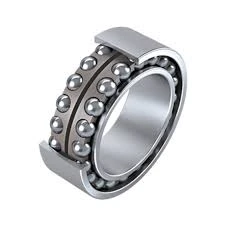
Dez . 05, 2024 09:58 Back to list
Exploring the Importance of Bearings in Ball Mill Performance and Efficiency
Understanding Ball Mill Bearing Technology
The ball mill is a crucial piece of equipment used in various industries, including cement, mining, and metallurgy. It is designed to grind materials into fine powder and is vital for the production of many products. One essential component that ensures the efficient operation of a ball mill is its bearing system. This article will explore the significance of ball mill bearings, their types, maintenance, and the technology behind them.
Importance of Ball Mill Bearings
Ball mill bearings support the moving parts of the mill, allowing for smooth rotation and reducing friction. They play a critical role in maintaining the alignment of the rotating assembly, which is essential for achieving optimal performance. Properly functioning bearings ensure consistent product quality, reduce energy consumption, and enhance the lifespan of the entire milling system.
The bearings in a ball mill are subjected to heavy loads, high speeds, and varying temperatures. Therefore, selecting the right bearing type is crucial to meet the operational demands and to ensure long-term reliability.
Types of Ball Mill Bearings
There are two primary types of bearings used in ball mills journal bearings and roller bearings
.1. Journal Bearings These are the most commonly used bearings for ball mills. They support the rotating shaft and allow it to turn smoothly while minimizing friction. Journal bearings are typically made from materials such as bronze or white metal and are lubricated with oil or grease. Their simple design and ability to withstand high loads make them ideal for heavy-duty applications.
2. Roller Bearings Roller bearings feature cylindrical rolling elements, which provide a larger contact area than traditional ball bearings. This design allows them to support higher radial loads and is often used in applications where high speed and precision are required. However, roller bearings are less common in ball mills compared to journal bearings due to their complexity and higher cost.
Maintenance of Ball Mill Bearings
ball mill bearing

Proper maintenance of ball mill bearings is essential to ensuring the longevity and efficiency of the ball mill. Regular inspections should be performed to check for wear and tear, misalignment, and lubrication levels. Some key maintenance practices include
- Lubrication Ensuring that bearings are adequately lubricated is vital for reducing friction and wear. The type of lubricant used and the frequency of application will depend on the operating conditions of the mill. In some cases, automated lubrication systems are employed to maintain optimal levels without manual intervention.
- Alignment Checks Misalignment of the bearing can lead to premature failure and reduced efficiency. It is crucial to regularly check the alignment of the bearings and make necessary adjustments to ensure optimal performance.
- Temperature Monitoring Bearings can overheat due to excessive friction or improper lubrication. Monitoring the temperature of the bearings can help identify potential issues early, allowing for timely interventions.
- Visual Inspections Regular visual inspections can help identify signs of wear, corrosion, or other issues that may affect the performance of the bearings. Any abnormalities should be addressed immediately to avoid more significant problems.
Advances in Bearing Technology
Recent advancements in bearing technology have led to the development of improved materials and designs that enhance the performance and reliability of ball mill bearings. Innovations such as ceramic bearings offer several advantages, including higher resistance to wear and lower friction coefficients. These advancements not only improve the efficiency of ball mills but also reduce the environmental impact associated with their operation.
Moreover, the integration of sensors and monitoring systems allows for real-time analysis of bearing performance. This predictive maintenance approach helps in identifying potential failures before they occur, minimizing downtime, and optimizing maintenance schedules.
Conclusion
In conclusion, ball mill bearings are a fundamental component of the milling process, influencing performance, efficiency, and longevity. Understanding the types of bearings, proper maintenance techniques, and advancements in technology is essential for operators and maintenance personnel. By prioritizing the health of ball mill bearings, industries can ensure smooth operations and enhance their productivity amid increasing demand for high-quality products. The continuous evolution of bearing technology promises even greater efficiencies and outcomes in the future.
Latest news
-
Grooved Ball Bearing Design and Functionality
NewsJun.04,2025
-
Concrete Mixer Bearing Load Capacity Testing
NewsJun.04,2025
-
6004 Bearing Dimensions in Robotic Joint Designs
NewsJun.04,2025
-
Advantages of Single-Row Deep Groove Ball Bearings
NewsJun.04,2025
-
Applications of Deep Groove Ball Bearings in Automotive Systems
NewsJun.04,2025
-
Innovations in Bearing Pressing Machine Design
NewsJun.04,2025
